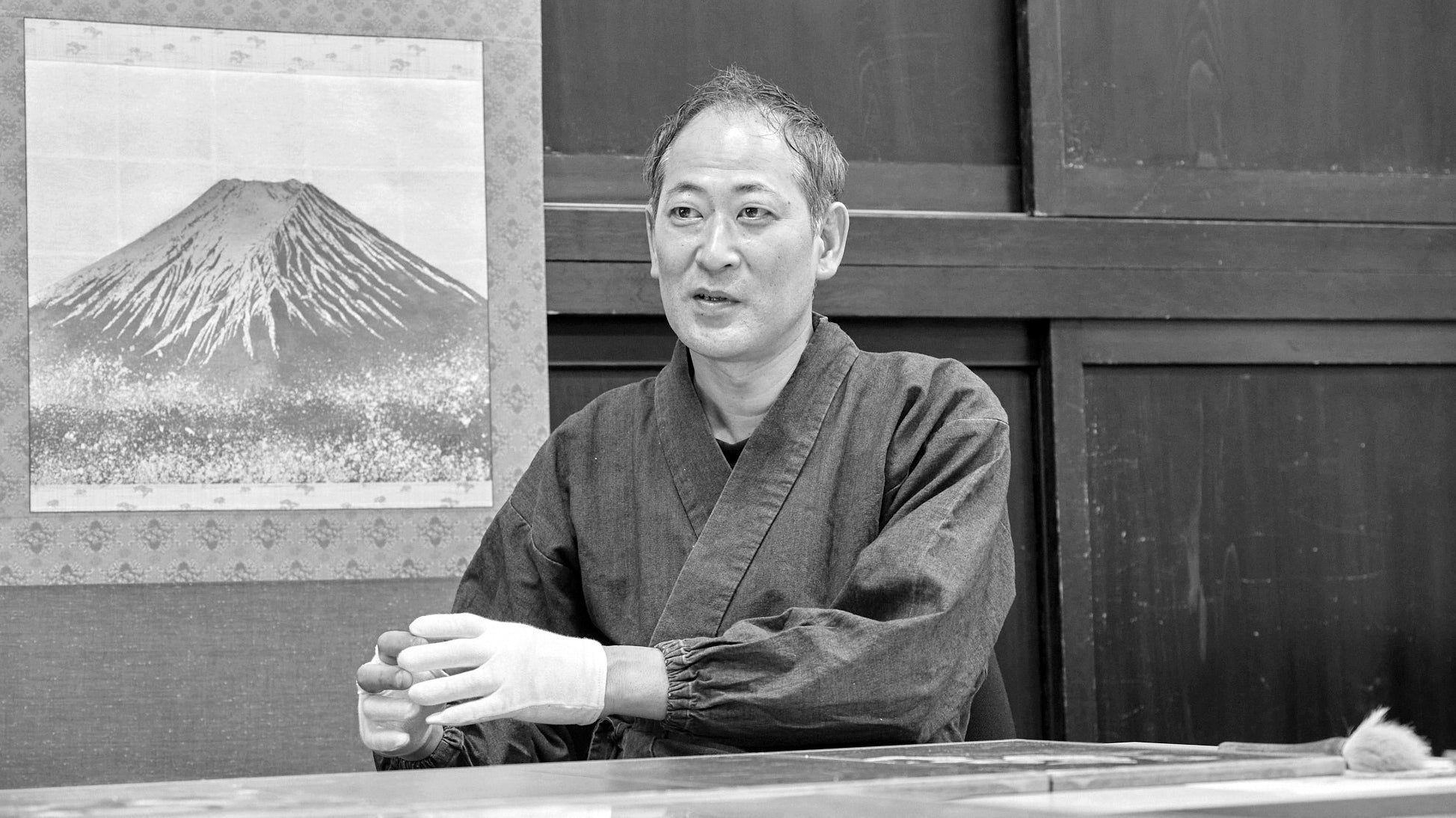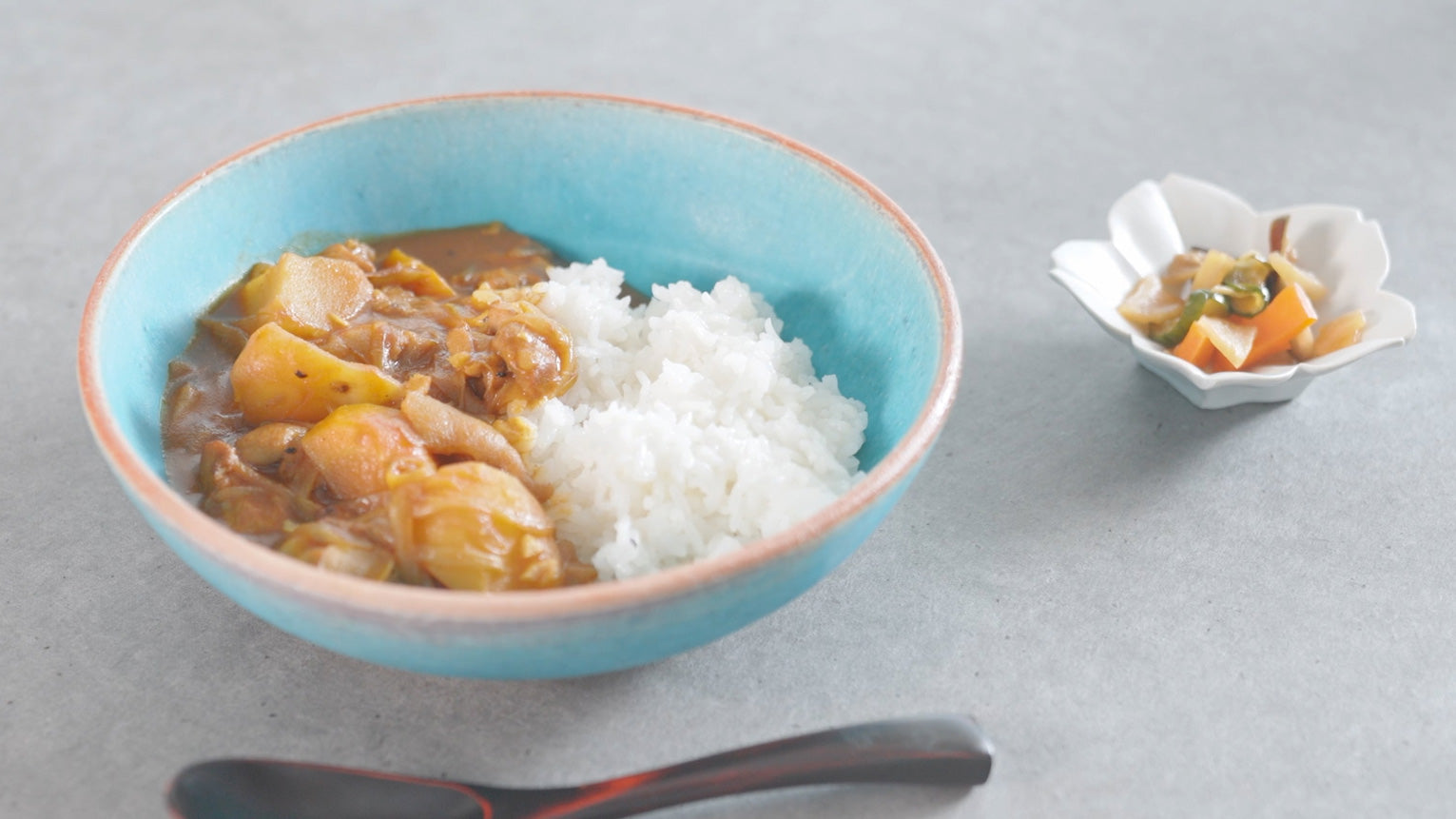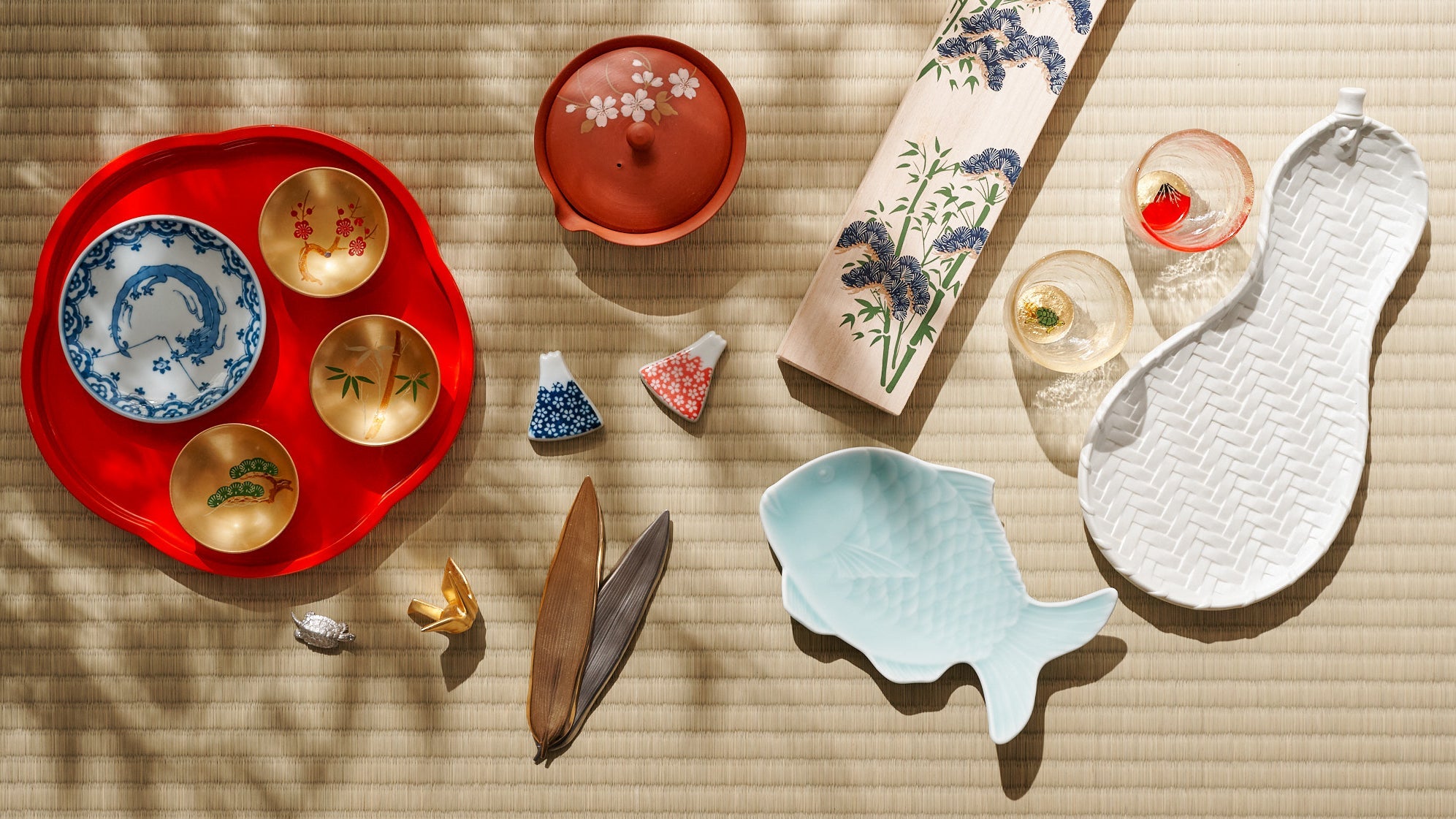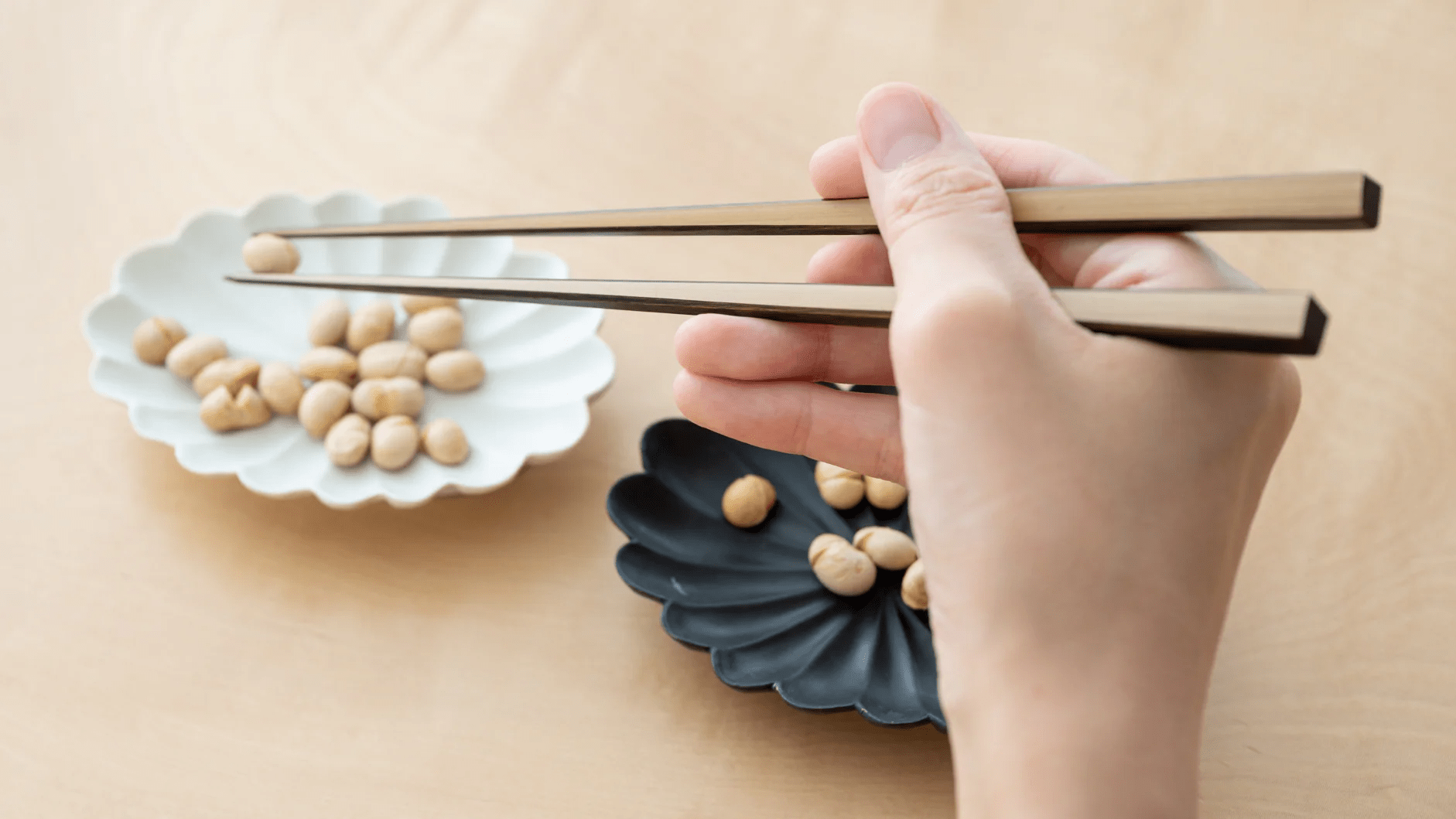
Kidoguchi Yoshio: A Painter of Light, in Gold and Shadow
De Team MUSUBI
Tucked between the Sea of Japan and the rugged mountains of Ishikawa Prefecture lies Kanazawa, a city known not only for its preserved Edo-period (1603–1868 CE) districts and refined cuisine, but for something far more ephemeral: gold leaf so fine it quivers at the whisper of wind. Kanazawa produces over 98% of Japan’s gold leaf, and at the heart of this craft stands HAKUICHI, a workshop where centuries of tradition meet innovation.
This time, Team Musubi was given the rare opportunity to step inside HAKUICHI’s studio and speak with one of its most skilled artisans: Kidoguchi Yoshio. His creations shimmer with restrained elegance, as the interplay of gold, shadow, and silence slowly unfolds. Every surface breathes refinement; each edge bears the weight of decades of disciplined mastery.
In this interview, we were offered an insider’s view of Kidoguchi’s path as a gold leaf craftsman—a quiet yet profound journey of technique, devotion, and the invisible labor behind each luminous work.
Table of contents
Poetry of Gold: Kanazawa’s Enduring Craft
Gold has long stood for luxury and prestige. In Japan, as across many cultures, it shines with a singular authority. Beyond its former life as currency, gold has been prized in ornament and art, lending objects a refined, unmistakable presence. Kinpaku, gold leaf, an astonishing material beaten to a thickness between one ten-thousandth and one twenty-thousandth of a millimeter, condenses generations of ingenuity and patience into a sheet as light as breath.
In Kanazawa, on Japan’s Hokuriku coast, this centuries-old craft has been honed to its highest expression. Here, artisans do more than preserve tradition; they push the boundaries of gold leaf’s aesthetic potential, allowing it to breathe new life into objects, architecture, and even the calm rituals of daily living. The streets of Kanazawa seem to carry their own soft-focus glow: rows of wooden-lattice townhouses and shopfronts occasionally catch the light with a glint of gold. In shop windows, delicate bowls and ornaments gleam with meticulous craftsmanship, while on a street corner, a daring confectioner blankets ice cream in gold leaf, inviting both the eyes and the palate into an indulgent moment.

On this occasion, Team Musubi stepped inside HAKUICHI—the company that first made gold leaf the star of its creations in Japan and named the genre “Kanazawa foil crafts,” opening a new chapter for the material. They honor more than four centuries of hakuuchi (foil-beating) while continuing to innovate, bringing the glow of gold from altars and heirlooms into the texture of daily life.

At HAKUICHI, everyone from engineers and designers to artisans is devoted to the smallest details. With millimeter-perfect precision, they hammer, stretch, and lay each sheet. Then, guided by a refined aesthetic, they breathe new life into gold, transforming it into contemporary tableware, accessories, and everyday objects.
Step into their workshop and you’ll find craftspeople working under pools of quiet light. Gold leaf, thin as a cicada’s wing, trembles with the rhythm of their breath, as though time itself has paused to watch. In their hands, Kanazawa’s gold leaf moves gracefully from tradition into the present, its radiance preserved to shine for generations to come.
Precision of a Gold Leaf Craftsman

Guided by the staff at HAKUICHI, Team Musubi began our visit at their store. There, we were surrounded by an array of exquisitely crafted gold-leaf creations—tableware and placemats shimmering with a captivating glow, skincare products enriched with gold leaf, and even sake infused with edible gold. Each piece spoke to the material’s inherent beauty and to the mastery of the artisans who shaped it, leaving us in deep awe.

The experience heightened our anticipation for the upcoming interview with craftsman Kidoguchi Yoshio. We were eager to step deeper into the luminous world of artistry that he has so brilliantly brought to life.

Then, we arrived at HAKUICHI’s production workshop. As we made our way through the workspace, we passed rows of pieces left to dry naturally, their surfaces catching the light with a gentle sheen. We moved through a drying room warm with the scent of work in progress, then a design department alive with creative energy, before finally reaching Kidoguchi’s workplace. As we stepped inside, we were met by his warm smile, and he soon began to speak of his journey as a craftsman, tracing the years from his first tentative steps to the mastery he now commands, as well as the persistence that carried him through.
“My parents were hand-painted sign makers, and under their influence, I developed a love for drawing as early as elementary school. By high school, I was attending an oil painting class every week. After graduation, I entered the Wajima Lacquerware Technical Training Institute, and from there my interest in lacquer and the world of traditional crafts deepened, eventually leading me to continue my studies,” Kidoguchi recalls. From that early passion, he found his own path in art. Later, through an introduction from his teacher, he arrived at HAKUICHI—a connection he regards as a rare and meaningful stroke of fate.
“The president at the time told me, ‘I hope you will help establish a world where gold leaf and lacquer coexist.’ From that moment, I began to work with gold leaf little by little—and that was when I discovered its fascination. Gold leaf is delicate and challenging to handle, yet its character shifts entirely depending on how it’s used: it can hold a deep, glossy darkness, radiate a soft, gentle glow, or even turn the fine wrinkles in its surface into vivid, expressive elements.” As he spoke, we could sense a genuine, deep-rooted affection for the craft and an intimate understanding of what makes gold-leaf artistry so compelling.

As he spoke, our eyes were inevitably drawn to the Aka Fuji (Red Fuji) hanging scroll taking shape before us. The piece captures the fleeting moment when the summer morning sun casts a gradation of red across Mount Fuji’s slopes, the ridgelines rendered with a sculptural precision, and at the base, a vast sea of clouds rolling in soft, majestic layers. It was impossible to look away.

Kidoguchi explained while demonstrating, “Here I’m using a shikisaihaku (colored foil) created through a technique we developed at HAKUICHI by inducing color changes through the chemical reactions of metals. Unlike artificial coloring, it carries a natural depth and subtle, shifting tones that only occur in nature, giving the work a richness and expressiveness all its own.” He added, “To achieve this soft gradation of color, I have to test and select the right leaf again and again. It’s one of the hardest stages in the process and demands persistent experimentation.”

Next, as he explained how he renders the sea of clouds, he showed us a traditional tool. He places the gold leaf inside and, using a set of meshes of different densities at the tip, sifts it into flakes of varying sizes—from coarse to fine.

He gave us a first-hand demonstration of the intricate process, showing how the delicate gold leaf fragments drift down like butterflies through the specialized tools, before being carefully positioned with a brush onto areas where adhesive had been applied beforehand. "The gluing stage is incredibly important and complex," he explained, "because the adhesive's properties change with temperature, and the application technique and timing are absolutely critical—you need just the right amount, applied at precisely the right moment."

A single piece takes at least a year to complete from initial concept to finished work, he told us. This timeline includes countless trials and inevitable failures along the way, but presenting the client with a flawless final result is what every craftsperson from HAKUICHI strives for.
Tracing Tomorrow in Gold

When I asked about his future aspirations, he reflected:
"I want to create works that don't exist anywhere in the world yet—to push the boundaries of what gold leaf can express."
He then brought out a kintsugi tea bowl he had restored. Fine gold threads traced along the original cracks, transforming old breaks into entirely new patterns. Under the workshop lights, the earthy clay and lustrous gold leaf created a dialogue of textures—subdued yet richly layered.
In these pieces, we witnessed the craftsman's relentless creativity and his unwavering dedication to exploring the possibilities of his art.
Kanazawa’s craft endures because it refuses to stand still. At HAKUICHI, tradition is not a script to recite; it’s a language expanded by each experiment, each failure, each success. In our brief time there, we had witnessed more than technical mastery; we had glimpsed the soul of a tradition that refuses to remain static, one that finds new expression while honoring its ancient roots.
In HAKUICHI’s studio, surrounded by works that shimmer with both tradition and possibility, we understood that some crafts transcend their materials to become something larger, a meditation on patience, a celebration of human touch, and a bridge between past and future that gleams as bright as gold itself.







Dejar un comentario
Este sitio está protegido por hCaptcha y se aplican la Política de privacidad de hCaptcha y los Términos del servicio.